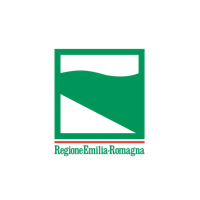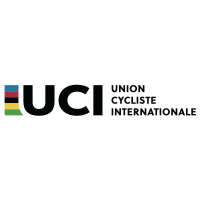Imola, emilia-romagna
24th - 27th September 2020
The fastest road world championships in history
The Organizing Committee of the 2020 Road Cycling World Championships, Marco Selleri and Marco Pavarini, greet and thank all the people, institutions and companies involved in this fantastic event.
Regione Emilia-Romagna, the Italian Cycling Federation, the Imola Circuit, the Municipality of Imola and Con.Ami have conceived the candidacy and won this opportunity for the whole territory and, in just 20 days from the announcement of the assignment, we were able to create one of the most complex World Championships in recent history.
The President of the IOC, Thomas Bach, awarded this World Cup the Olympic Medal for the Organization: it is the medal for this territory and for all the people who have contributed to this historic enterprise.
Everyone be proud of it.
GALLERY
VISIT
The fastest road world championships in history
The Organizing Committee of the 2020 Road Cycling World Championships, Marco Selleri and Marco Pavarini, greet and thank all the people, institutions and companies involved in this fantastic event.
Regione Emilia-Romagna, the Italian Cycling Federation, the Imola Circuit, the Municipality of Imola and Con.Ami have conceived the candidacy and won this opportunity for the whole territory and, in just 20 days from the announcement of the assignment, we were able to create one of the most complex World Championships in recent history.
The President of the IOC, Thomas Bach, awarded this World Cup the Olympic Medal for the Organization: it is the medal for this territory and for all the people who have contributed to this historic enterprise.
Everyone be proud of it.
The world championships book
ROUTE
GALLERY
VISIT
THE IMOLA RACETRACK IS AT THE HEART OF EVERYTHING
Imola, and its location right on the hyphen between Emilia and Romagna, was the hub of the 2020 World Cycling Championships.
The start and finish lines in Imola’s Enzo e Dino Ferrari racetrack, a state of the art facility that in 1968 saw Vittorio Adorni win the world championship with a 9’50” lead over the Belgian Herman Van Springer. To this day he still holds the record for the greatest gap between first and second finisher in a world championship. The racetrack is famous worldwide because just five weeks later it became part of the Formula 1 series.
Each lap of the course 28.8 km long with a 550-metre altitude gap which includes the Mazzolano (13% maximum gradient) and Cima Gallisterna (14% maximum gradient) climbs made the road races spectacular and demanding: just like any great classical race course that crowns world class champions.


2020 UCI Road World Championships Official Partners
Main Sponsors


Institutional Partners








Official Sponsors


Official suppliers




Event suppliers







F.A.Q. - Questions and answers
Imola and the Emilia-Romagna Region are hosting the Elite World Championships from the 24th to the 27th of September. Four races in four days to award the rainbow title in the men’s and women’s time trial and road race.
In this peculiar historical moment, after Aigle-Martigny’s cancellation of the event, the UCI has chosen Imola, Emilia-Romagna and Italy who has taken on the international challenge to organize the World Cycling Championships to bring together in a unique worldwide setting the enthusiasm of the people, of cycling fans and of the whole sports environment.
The Elite Men and Women time trials will take place on the same 31.7 km course.
The Elite Men and Women road races will take place on a 28.8km circuit with a 550m altitude gap (to be repeated 5 times by female riders for an overall length of 143 km. with 2,750 m. difference in altitude and 9 times by male riders for an overall length of 253.2 km with 4,950 m. difference in altitude), which includes the Mazzolano climb (with gradients peaking at 13%) and the Cima Gallisterna climb (with gradients peaking at 14%).
The schedule:
– Thursday 24 September: Elite women’s time trial
– Friday 25 September: Elite men’s time trial
– Saturday 26 September: Elite women’s road race
– Sunday 27 September: Elite men’s road race
Imola, and its location right on the hyphen between Emilia and Romagna, will be the hub of the 2020 World Road Cycling Championships. The start and finish lines will be in Imola’s Enzo e Dino Ferrari Racetrack, a state-of-the-art facility that in 1968 saw Vittorio Adorni win an historical rainbow jersey with a 9 minute 50 second lead over the Belgian Herman Van Springer. This is still the largest gap ever recorded at the UCI Worlds.
Yes, it will be but you will have to purchase a ticket. There will be a limited number of tickets available in compliance with current laws.
Tickets will be on sale soon through authorized channels. More information will be available soon at www.imola-er2020.it.
The website for press accreditation applications is active until 16 September 2020.
Accreditation applications will be assessed by the organization.
Note:
– Journalists and photographers (both printed and online) may register and submit their accreditation applications at:
https://uci.getyourevent.online/
Its strategic location in central-northern Italy makes the Enzo e Dino Ferrari Racetrack very easy to reach with any means of transportation.
BY AIR: The 3 closest airports are: Bologna: 49 km. Forlì: 46 km. Rimini: 89 km.
BY TRAIN: The Imola train station is approximately 3.5 km. away from the Racetrack entrance.
BY CAR: Take the A14 highway to the “Imola” exit and the Racetrack is approximately 8 km. away.
There will soon be a list of affiliated hotels in the website: www.imola-er2020.it.
F.A.Q. - Covid-19
SOURCE: Ministry of Health Italy
LAST UPDATE: September 9, 2020
The symptoms of COVID-19 may vary, depending on the severity of the disease, from the absence of symptoms (being asymptomatic) to fever, cough, sore throat, weakness, fatigue and muscle pain and in the most severe cases, pneumonia, acute respiratory distress syndrome, sepsis and septic shock, which potentially lead to death.
The most common symptoms of Covid-19 are:
- Fever ≥ 37,5°C and chills
- Dry cough
- Breathing difficulties
- Loss of taste or smell
- Nasal congestion
- Sore throat
- Diarrhea (mostly in children)
- Cough or sneeze into your elbow or use a tissue. If you use a tissue, dispose of it carefully after a single use
- Wash your hands with soap and water for at least 20 seconds
- Stay one metre or more away from people to reduce the risk of spreading the virus through respiratory droplets
- If you feel unwell, stay at home.
Elderly people over the age of 70, such as high blood pressure, heart problems, diabetes, chronic respiratory diseases, cancer and immunodepressed patients (by congenital or acquired disease, transplanted or under treatment with immunosuppressive drugs) are more likely to develop serious forms of the disease.
All elderly people, or people suffering from one or more chronic diseases or with congenital or acquired immunosuppression are recommended not to leave their home or residence, unless strictly necessary, and to avoid crowded places, where it is not possible to maintain a safe interpersonal distance of at least one meter.
The infectious period may start one or two days before symptoms appear, but people are likely to be more infectious during the symptomatic period, even if the symptoms are mild and very non-specific. It is estimated that the infectious period lasts 7-12 days in moderate cases, and on average up to two weeks in severe cases.
According to current knowledge, virus transmission mainly occurs from symptomatic people, but it can also occur shortly before the onset of symptoms, in case of proximity with other people for prolonged periods of time. People who never show symptoms can transmit the virus, even if it is not yet clear to what extent this occurs: further studies are needed.
To help break the transmission chain, it is necessary to limit contact with COVID-19 positive people, wash your hands frequently and thoroughly and wear a mask when at least 1 meter of physical distance cannot be guaranteed.
A “close contact” (high risk exposure) of a probable or confirmed case is defined as:
- A person living in the same household as a COVID-19 case
- A person having had direct physical contact with a COVID-19 case (e.g. shaking hands)
- A person having unprotected direct contact with infectious secretions of a COVID-19 case (e.g. touching used paper tissues with a bare hand)
- A person having had face-to-face contact with a COVID-19 case within 2 metres and > 15 minutes
- A person who was in a closed environment (e.g. classroom, meeting room, hospital waiting room, etc.) with a COVID-19 case without suitable PPE
- A health care professional or other person providing direct assistance to a COVID-19 case or lab personnel handling samples of a COVID-19 case, who did not use the recommended PPE or used unsuitable PPE
- A contact in an aircraft sitting within two seats (in any direction) of the COVID-19 case, travel companions or persons providing care, and crew members serving in the section of the aircraft where the index case was seated (if severity of symptoms or movement of the case indicate more extensive exposure, passengers seated in the entire section or all passengers on the aircraft may be considered close contacts).
Healthcare professionals, based on individual risk assessments, may believe that some people, regardless of the duration and setting of the contact, have had a high-risk exposure.
Under the Ministerial Circulars and Orders, the local health authorities must place any close contacts of a probable or confirmed case under quarantine with active surveillance for 14 days.
Yes, infected people can transmit the virus, both when they show symptoms and when they are asymptomatic. That is why it is important that all sick people are identified through tests, isolated and, depending on the severity of their illness, receive medical treatment. Confirmed but asymptomatic people must also be isolated, to limit contact with others. These measures break the chain of the transmission of the virus.
That is why it is always important to stay at least 1 metre away from others, cover your mouth and nose with a bent elbow or handkerchief when coughing or sneezing, clean your hands regularly and stay at home in case of symptoms, or if requested by your GP or the prevention department. It is also important to wear a mask when physical distancing and other prevention and control measures cannot be applied.
The Ministerial Decree DPCM of September 7, 2020 extends to October 7, 2020, all the minimum precautionary measures adopted to counteract and contain the spread of COVID-19, adopted through the decree DPCM of August 7, 2020 and through the ordinances of the Italian Minister of Health of August 12, 2020 and August 16, 2020.
The ordinance of the Minister of Health issued on August 12, 2020 envisages mandatory swab tests starting from August 13, for all travellers who have stayed or transited in Malta, Croatia, Spain and Greece, in the 14 days preceding their arrival in Italy.
In addition, it provides for a ban on entry into Italy for citizens who in the previous 14 days have stayed or transited in Colombia.
By effect of the ordinance of August 16, 2020, dancing activities which take place in discos and any other space open to the public are suspended, both outdoors and indoors,. It should be noted that the Ordinance does not regulate events of a private nature that are intended for specific individuals and chosen based on personal bonds, friendship, or kinship. As far as these events are concerned, as indiscriminate access by the public is not allowed, the restrictions laid down in the above-mentioned Ordinance do not apply. Therefore, marriages, confirmations and communions, for which there is no indiscriminate access by the public, are excluded from the scope of application of the above mentioned Ordinance, without prejudice, of course, to the provisions of the Decree of the President of the Council of Ministers of August 7 2020, relating to the ban of assembly and hygiene measures provided for therein.
The Ordinance also provides, as a containment measure against the spread of the new coronavirus, the obligation from 18.00 to 06.00 on the entire national territory to use respiratory tract protection also outdoors, in all areas belonging to places and premises open to the public as well as in public spaces (squares, lay-byes, streets, promenades) whose physical characteristics may facilitate the formation of gatherings, of both spontaneous and/or occasional nature.